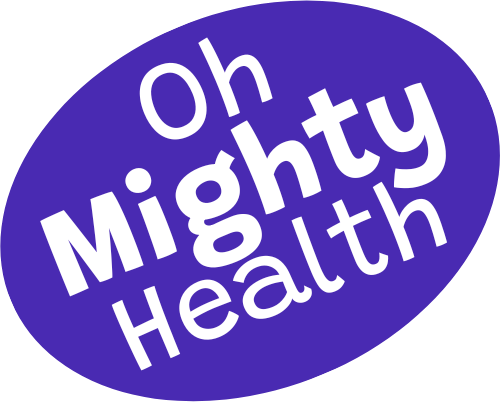Top 10 Estrogen-Rich Foods for Women Who Want Gentle Balance
You don’t need to be heading into menopause to feel that something’s off.
Maybe it’s the way your mood dips out of nowhere.
Maybe your skin’s drier than usual. Maybe your sleep’s been getting patchy, or your energy just isn’t you lately.
As a health coach, I’ve seen this so often: women wondering what’s going on, quietly pushing through, never quite feeling like themselves and never being told that low estrogen might be part of the picture.
Here’s the thing: your hormones don’t crash overnight. They shift. Gently, subtly, and often long before you’re technically menopausal.
That’s why supporting your estrogen levels early on, and naturally if possible, can make a huge difference in how you feel day to day.
And no, I’m not talking about hormone therapy. I’m talking about simple, everyday foods that nudge your body in the right direction, without extremes, without stress, and without pressure to “fix” anything.
This guide will walk you through the top 10 estrogen rich foods that can gently support your body’s natural balance.
Whether you’re in your 30s, 40s, 50s or beyond, if your body’s asking for support, this is a powerful (and delicious) place to start.
What are estrogen-rich foods?
Let’s clear something up straight away: when we talk about estrogen-rich foods, we’re usually referring to phytoestrogens.
These are natural compounds found in plants that have a gentle, estrogen like effect on the body.
They’re not hormones. They don’t override your system.
Instead, they can support your body’s own hormonal rhythms, especially helpful when your natural estrogen is low or fluctuating.
Think of it like this: you’re not forcing anything, you’re simply offering your body the kind of nourishment it can recognise and use when it needs a hand.
Phytoestrogens may help ease things like mood swings, dryness, low energy, or irregular cycles. They’re especially useful for women in perimenopause or menopause, but they can also benefit younger women with hormonal imbalances or PMS.
They’re in foods you probably already eat as you’ll see below.
Top 10 estrogen rich foods (and how to use them)
1. Flaxseeds (tiny seeds, powerful hormonal support
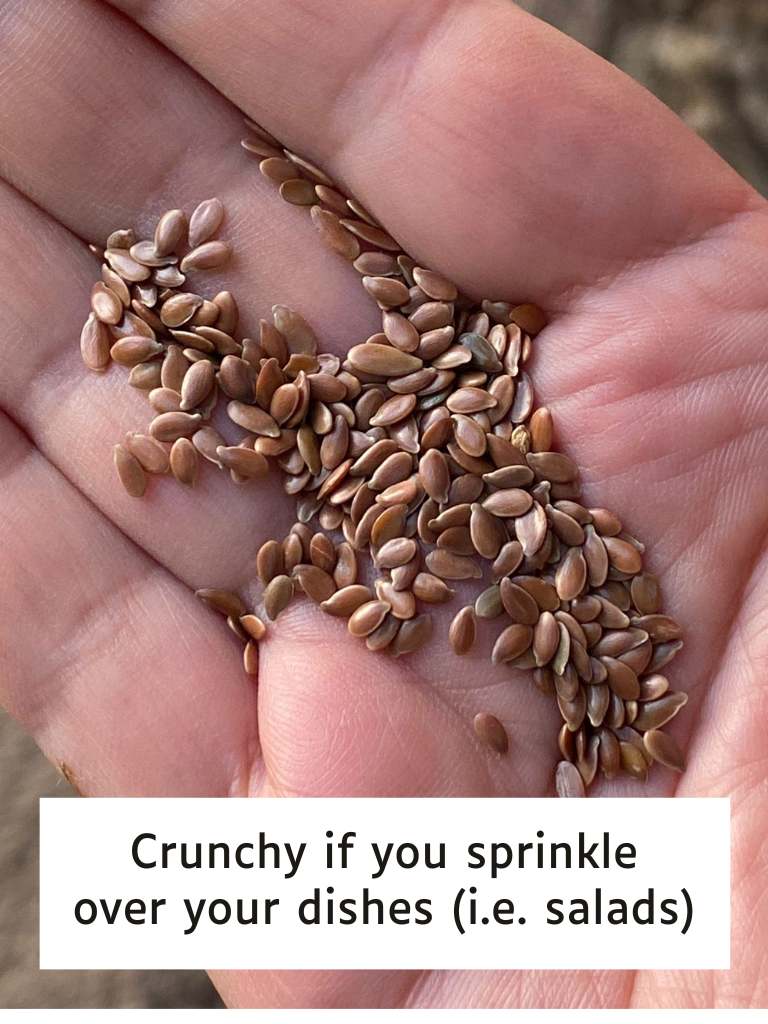
Flaxseeds are one of the richest sources of lignans, a phytoestrogen that can help support natural estrogen levels. They also contain omega-3s and fibre, which are great for your skin, digestion, and overall hormone health.
How to use: Use 1 to 2 teaspoons of freshly ground flax daily. Add to porridge, yogurt, smoothies or mix into homemade crackers. Always grind fresh or buy milled — whole flax passes through without much benefit.
2. Soy (tofu, tempeh, edamame… Natural support for perimenopause and beyond

Soy is rich in isoflavones, which can gently mimic estrogen and may help with symptoms like hot flashes, dryness, or mood shifts. It’s one of the most researched plant-based estrogen foods… Just make sure it’s organic and minimally processed.
How to use: Include 2 to 4 servings a week. Try stir-fried tofu, baked tempeh, or a bowl of steamed edamame with sea salt.
3. Chickpeas (hormone-friendly protein for every stage of life
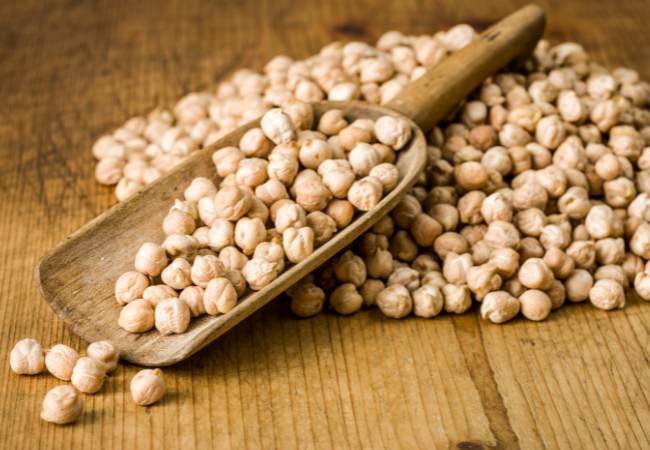
Chickpeas contain phytoestrogens along with protein and B vitamins that support adrenal and hormonal function. They’re a great option if you want something filling, nourishing and simple to prepare.
How to use: ½ cup cooked is a good portion. Enjoy in warming stews, salads, or make a fresh batch of hummus with lemon and garlic.
4. Alfalfa sprouts (subtle but effective estrogen support
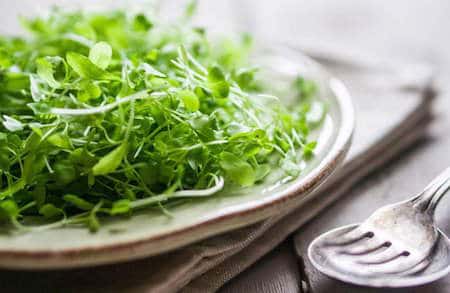
Often overlooked, alfalfa sprouts contain plant hormones that may support estrogenic activity. They’re also high in vitamin K, which can support bone health — especially helpful post-40.
How to use: Add a small handful to sandwiches, wraps, salads or grain bowls. Avoid during pregnancy due to mild hormonal effects.
5. Sesame seeds (rich in lignans and bone-supporting minerals)
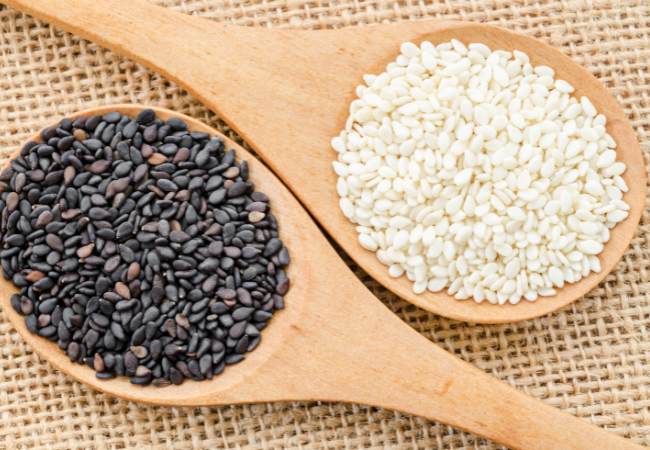
These tiny seeds pack a hormone-supportive punch thanks to their lignan content, plus they’re a great source of calcium, magnesium and zinc. All of these are important for skin, bone health, and hormone regulation.
How to use: Have 1 teaspoon daily. Sprinkle on toast, stir into rice, or blend into sauces using tahini (sesame seed paste).
6. Dried apricots (sweet, phytoestrogen-rich and travel-friendly)
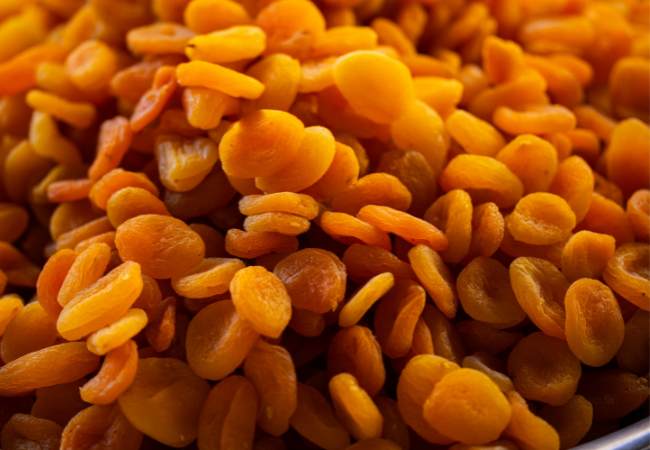
Naturally high in plant estrogens, dried apricots are a handy snack that supports hormones while offering fibre and gentle iron — especially helpful if you tend toward heavy periods or feel low on energy.
How to use: Eat 2 to 3 dried apricots with a few almonds or pumpkin seeds to balance the natural sugars.
7. Red clover tea (traditional support for hormonal shifts)
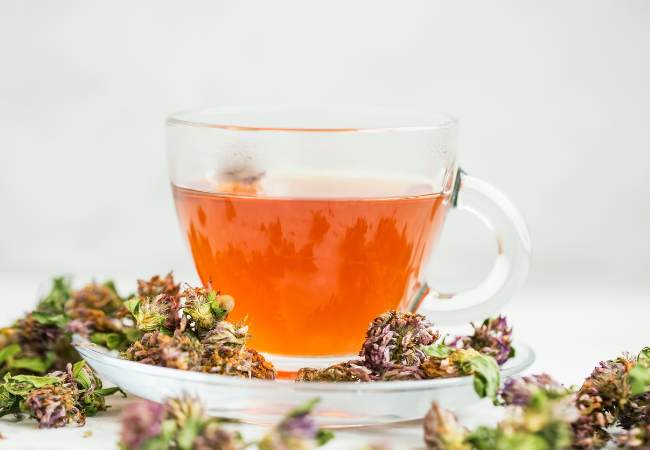
Red clover contains high levels of isoflavones, which may help with hot flashes, irritability, and dryness during perimenopause or menopause. It’s been used in herbal traditions for centuries.
How to use: Brew one cup per day, three to four days a week. Use dried organic red clover and steep well for best effect. Always check with your doctor if you’re taking hormone-sensitive medication.
8. Oats (grounding and gut-friendly for hormone balance)
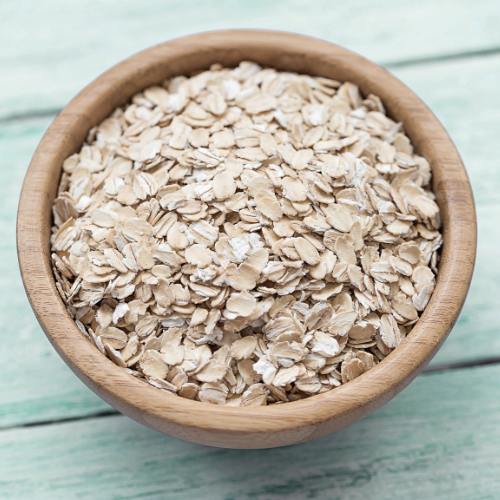
Oats contain lignans and support the gut microbiome, which plays a key role in how estrogen is processed in the body. They’re also calming for the nervous system, helping reduce cortisol — the stress hormone that can throw everything off.
How to use: ½ cup cooked oats per day is great. Use rolled oats for overnight oats, warming porridge or add to healthy baked snacks.
9. Sunflower seeds (gentle skin and hormone nourishment)
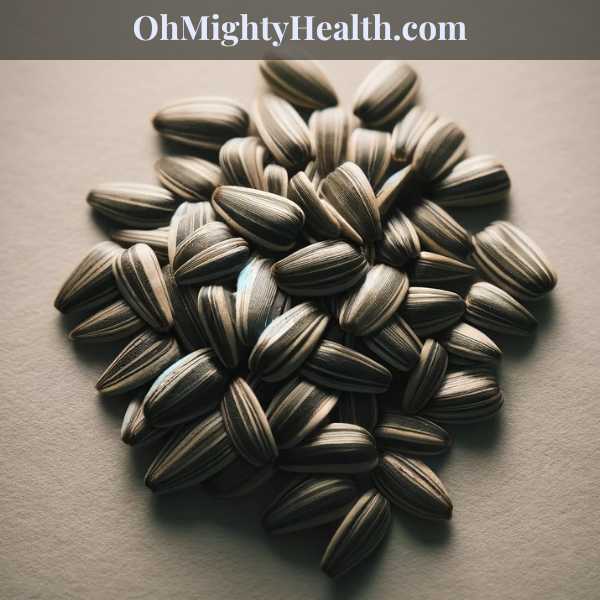
Sunflower seeds offer a mix of lignans, vitamin E, and selenium — all helpful for managing dryness, maintaining skin elasticity and supporting estrogen metabolism.
How to use: A tablespoon daily is enough. Eat them raw, toasted, or add to soups, salads or breakfast bowls.
10. Barley (underrated grain with estrogen-like compounds)
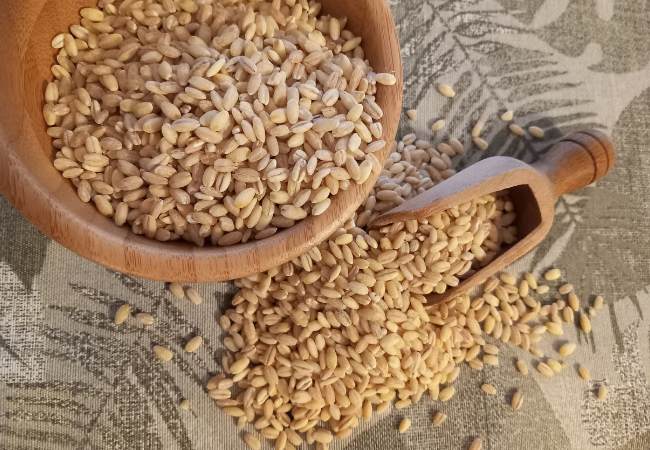
Barley is another phytoestrogenic grain, and its high fibre content helps regulate blood sugar, improve digestion and support the gut-liver axis — which is key for balanced hormones.
How to use: Use ½ cup cooked barley in hearty soups, grain salads, or as a base instead of rice. Try soaking it first to improve digestibility.
How much is too much? And how to use these foods without overthinking it
You don’t need to eat everything on the list or track your intake obsessively. The goal here is gentle support, not another set of rules to follow.
Start with one or two foods that feel easy and familiar. For most women, having one or two servings of phytoestrogen-rich foods per day is a good rhythm. That might be a bowl of oats with flax in the morning, or a tofu and barley stir-fry later in the week.
There’s no need to force it. Instead, think about variety over volume. Rotating your foods gives your body different types of plant compounds to work with — and it keeps things more interesting in the kitchen too.
Keep an eye on how you feel. If something feels too heavy, causes bloating, or simply doesn’t sit well with you, it’s fine to swap it out. You’re not trying to tick every box — you’re supporting your body in a way that feels kind and realistic.
And a quick note on soy: if you have thyroid issues or hormone-sensitive conditions (like certain types of breast cancer), it’s best to check with your doctor before adding large amounts. But for most women, a few servings of organic soy per week is safe and beneficial.
The idea here is to support your body, not stress it. Small changes, made consistently, tend to be the ones that stick, and the ones your hormones appreciate most.
A quick note on soy…
- If you have thyroid issues or a hormone-sensitive condition (like endometriosis or certain cancers), speak to your doctor before adding large amounts of soy
- For most women, a few servings of organic soy each week is absolutely fine — and can be very supportive
Mix and match: what a week of estrogen support can look like
You don’t need a meal plan, and this isn’t about being perfect. But it helps to see how these foods can fit naturally into your week — without feeling like a diet or another thing to manage.
Here’s a flexible guide to spark ideas:
Monday
Start the day with oats topped with ground flax and sunflower seeds.
Lunch: Chickpea salad with tahini dressing.
Dinner: Barley and veg soup with a sprinkle of sesame seeds.
Tuesday
Smoothie with banana, oats, and ground flax.
Lunch: Hummus wrap with alfalfa sprouts and grated carrot.
Snack: A few dried apricots and almonds.
Dinner: Stir-fried tofu with garlic, ginger and veg.
Wednesday
Red clover tea in the morning or evening.
Lunch: Leftover barley salad with herbs and lemon.
Dinner: Tempeh bowl with rice and steamed edamame.
Thursday
Overnight oats with berries, flax and sunflower seeds.
Lunch: Roasted veg and chickpeas over greens.
Dinner: Simple soup with barley and a tahini drizzle.
Friday
Smoothie again — or porridge if the weather’s cool.
Lunch: Big salad with sesame, sunflower seeds and sprouts.
Snack: A couple of apricots with herbal tea.
Dinner: Tofu stir-fry or baked tempeh with steamed greens.
Saturday
Toast with hummus and alfalfa sprouts.
Lunch: Oat and seed veggie burgers.
Dinner: Barley pilaf with herbs and lemon zest.
Sunday
Red clover tea after a slow morning.
Lunch: Chickpea curry with brown rice.
Dinner: Use up anything left over from the week — aim for colour, fibre and something that feels grounding.
No need to follow this exactly. It’s simply a way to show how easily these foods can become part of your rhythm — one meal, one ingredient at a time.
How do I know if I need more estrogen support?
You don’t need a diagnosis to start listening to your body. Sometimes, the signs are soft — a shift in energy, changes in your skin, or a feeling that something’s just… off.
Estrogen plays a role in so much more than most people realise. It affects your mood, your bones, your skin, your sleep, your cycle, even how you handle stress. When levels begin to drop or fluctuate, you might feel it — even if your doctor says your hormones are still “normal.”
So how do you know if your body could use a little support?
You might notice:
- Mood changes that feel hormone-related like irritability, weepiness, or anxiety
- New or worsening dryness (skin, eyes, vaginal)
- Sleep disruptions, especially waking in the early hours
- Low energy that isn’t linked to food or sleep
- Heavier or irregular periods (or the return of PMS you thought had gone)
- A general feeling of being ungrounded, foggy, or flat
This doesn’t mean something is wrong. It may just mean your body is in transition, and would respond well to extra care.
What kind of difference can you expect?
If you start eating more estrogen-supportive foods regularly, the changes won’t be dramatic, but they can be MEANINGFUL.
Some women feel more emotionally steady. Others notice better skin hydration, less bloating, or slightly improved sleep.
It’s subtle, but real. Often, it’s about getting back to feeling like yourself again.
It usually takes two to four weeks to notice any changes. And consistency matters more than quantity.
Is it really that important?
It can be, especially during perimenopause, menopause, or times of hormonal stress.
Supporting your body with food doesn’t replace medical treatment, but it can help soften the edges and give your system the gentle nudge it needs.
Even if your estrogen levels are within the normal range, that doesn’t mean they’re optimal for you. If your body’s showing signs that it’s struggling to keep balance, it’s worth listening.
When to speak to a doctor
If you’re dealing with sudden changes in your cycle, intense fatigue, ongoing dryness, or symptoms that interfere with daily life, it’s worth getting checked.
If you’re on HRT, have thyroid conditions, or any hormone-sensitive medical conditions, you should always speak to your healthcare provider before making big dietary changes.
What we’re doing here is gentle, food-based support, not medical treatment. But it can make a big difference in how you feel day to day.
How to start without overwhelm
If you’re nodding along to all this and thinking “I need to do this”, take a breath. You don’t have to get it all right straight away.
The point of eating for estrogen support isn’t to stress about what you’re doing wrong but to bring in a bit more of what helps. Small steps are more powerful than most people realise.
Start with one or two foods from the list that feel easy and familiar. Maybe it’s adding flax to your breakfast or choosing oats over boxed cereal.
Maybe it’s a few apricots in your bag or trying red clover tea before bed a couple of times a week.
You don’t need a plan. You just need a place to begin.
Let it be part of your routine, not something extra. A handful of seeds on your salad, chickpeas in your curry, a warm bowl of oats on a cold morning… It’s all enough.
The key is consistency. These foods work best when they’re gently, regularly showing up for you.
No pressure, no rules, just quiet support from the inside out.
My final thoughts
You don’t need to overhaul your life to support your hormones. You just need to pay attention and respond with care.
Estrogen isn’t something we usually think about until things start to shift. But by the time symptoms show up, your body’s often been asking for support for a while. The good news? You don’t need fancy supplements or extreme diets to begin helping it. Just food. Simple, everyday food.
This list isn’t a checklist. It’s a toolkit. A way to nourish your body in a way that feels gentle, balanced, and doable even when life is full and messy.
Start where you are. See what feels good. Listen to your body. And remember that support doesn’t have to be loud to be effective.
You deserve to feel like yourself: clear, steady, and well. And if these foods can help you move in that direction, then that’s already a powerful start!
Patri xx
